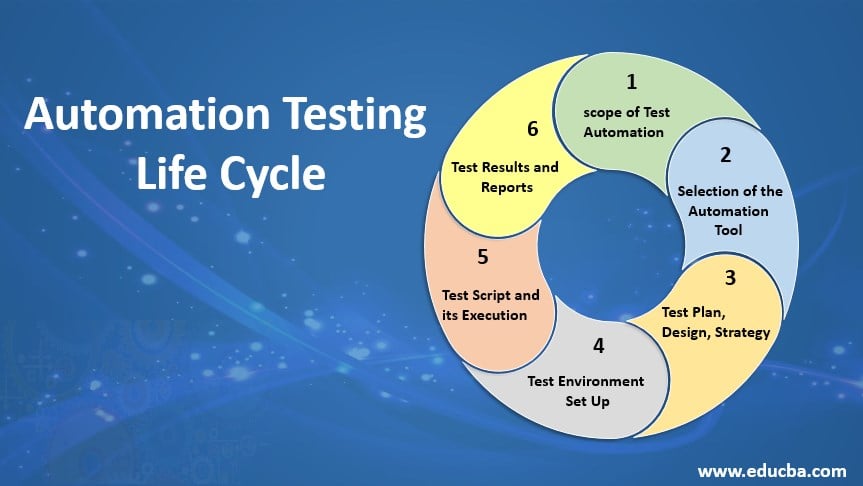Efficient Automation Testing: Enhancing Software Integrity and Speed
Efficient Automation Testing: Enhancing Software Integrity and Speed
Blog Article
From Handbook to Automated Testing: A Comprehensive Overview to Transitioning Efficiently and Efficiently
In the realm of software program screening, the change from guidebook to automated procedures has actually ended up being a progressively important shift for organizations seeking to improve efficiency and accuracy in their testing techniques. The trip from guidebook to automated screening is not without its obstacles, but when come close to purposefully and with a clear plan in mind, the benefits can be considerable.
Benefits of Automated Examining
Automated screening uses countless benefits, boosting performance and accuracy in software application advancement processes. One primary advantage is the substantial reduction in screening time. Automated tests can be run concurrently on multiple tools and running systems, dramatically accelerating the testing phase contrasted to hands-on testing. This boosted effectiveness enables faster comments on the high quality of the software application, making it possible for programmers to determine and resolve problems immediately.
Moreover, automated testing ensures a greater degree of accuracy in discovering issues. Given that automated tests adhere to predefined manuscripts, human error is minimized, resulting in more reputable examination outcomes. Consistency in screening is likewise enhanced, as automated examinations implement the same actions specifically each time they are run. This consistency is critical in making certain that all functionalities of the software application are thoroughly checked, decreasing the likelihood of undiscovered insects sliding via to production.
Selecting the Right Devices

First of all, examine your purposes and needs. Understand the extent of your task, the modern technologies included, and the capability of your group. This analysis will help you figure out the abilities and functions you call for in your testing devices.
Second of all, consider the compatibility of the devices with your existing systems and processes. Seamless integration with your current software program growth lifecycle is important to make sure a smooth transition to automation.
In addition, evaluate the scalability and versatility of the devices. As your screening needs progress, the devices ought to have the ability to adjust and accommodate changes properly.
Finally, consider the assistance and neighborhood around the devices. Durable support and an energetic user community can supply useful resources and assistance when carrying out automated screening. By meticulously thinking about these facets, you can select the right devices that straighten with your needs and set the phase for a successful transition to automated screening.
Writing Reliable Test Manuscripts

When crafting test manuscripts, it is necessary to consider the details needs of the software application being examined and make sure that the scripts address all critical performances. Clear and descriptive calling conventions for test manuscripts and test situations can improve readability and maintainability. In addition, incorporating error handling systems within the examination manuscripts can help in determining and addressing issues quickly.
Moreover, organizing test manuscripts right into modular components can improve reusability and scalability, lowering redundancy and enhancing performance in examination script upkeep. Routine evaluations and updates to check manuscripts are important to keep pace with evolving software application needs and capabilities. By complying with these principles, testers can develop durable and efficient examination scripts that add substantially to the success of automated screening processes.
Integrating Automation Into Workflows
Reliable assimilation of automation tools right into existing operations boosts and enhances processes productivity within software development cycles. When incorporating automation right into workflows, it is important to determine repeated jobs that can this link be automated to conserve time and lower human error. By flawlessly integrating automated testing devices like Selenium or Appium right into the software advancement lifecycle, groups can accomplish faster comments on code adjustments, causing quicker bug detection and resolution. This integration enables for constant screening throughout the advancement process, guaranteeing that any type of issues are determined beforehand, leading to greater software application quality. Furthermore, automation can be used to set off tests instantly after each code dedicate, giving prompt recognition and freeing up testers to focus on more complicated situations. Correct combination of automation devices requires collaboration in between advancement, testing, and operations teams to develop a unified workflow that enhances efficiency and performance in providing premium software program items.
Guaranteeing a Smooth Transition
Successfully transitioning to automated screening includes precise planning and careful execution to reduce disturbances and make the most of performance in the software program development process - automation testing. To make sure a smooth transition, it is necessary to begin by carrying out a detailed analysis of the present testing processes and identifying locations where automation can bring one of the most substantial advantages. Engaging with all stakeholders beforehand at the same time, including programmers, testers, and job supervisors, is crucial for garnering support and buy-in for the automation effort
Interaction is crucial during this shift phase. Clear interaction of the goals, benefits, and expectations of automated testing aids to take care of any resistance or issues that may develop. Additionally, providing ample training and sources for group members to upskill in automation devices and methods is essential this page for making sure a successful change.

Conclusion
Finally, transitioning from handbook to automated testing offers many benefits, including enhanced performance and reliability. By choosing the proper tools, writing efficient examination scripts, and integrating automation perfectly into operations, companies can make certain a smooth and successful change. It is important to accept automation as a valuable possession in software application testing procedures to enhance total quality and efficiency.
In the realm of software program testing, the change from manual to automated procedures has become a significantly essential transition for companies looking for to improve efficiency and accuracy in their screening methods. Automated examinations can be run concurrently on multiple gadgets and running systems, substantially speeding up the testing stage compared to hand-operated screening. Consistency in screening is additionally improved, as automated examinations implement the same actions exactly each time they are run.To ensure the effective application of chosen screening tools, the creation of effective test manuscripts plays an important function in verifying the functionality and performance of automated processes - over at this website automation testing. By complying with these concepts, testers can create robust and reliable test scripts that add considerably to the success of automated screening processes
Report this page